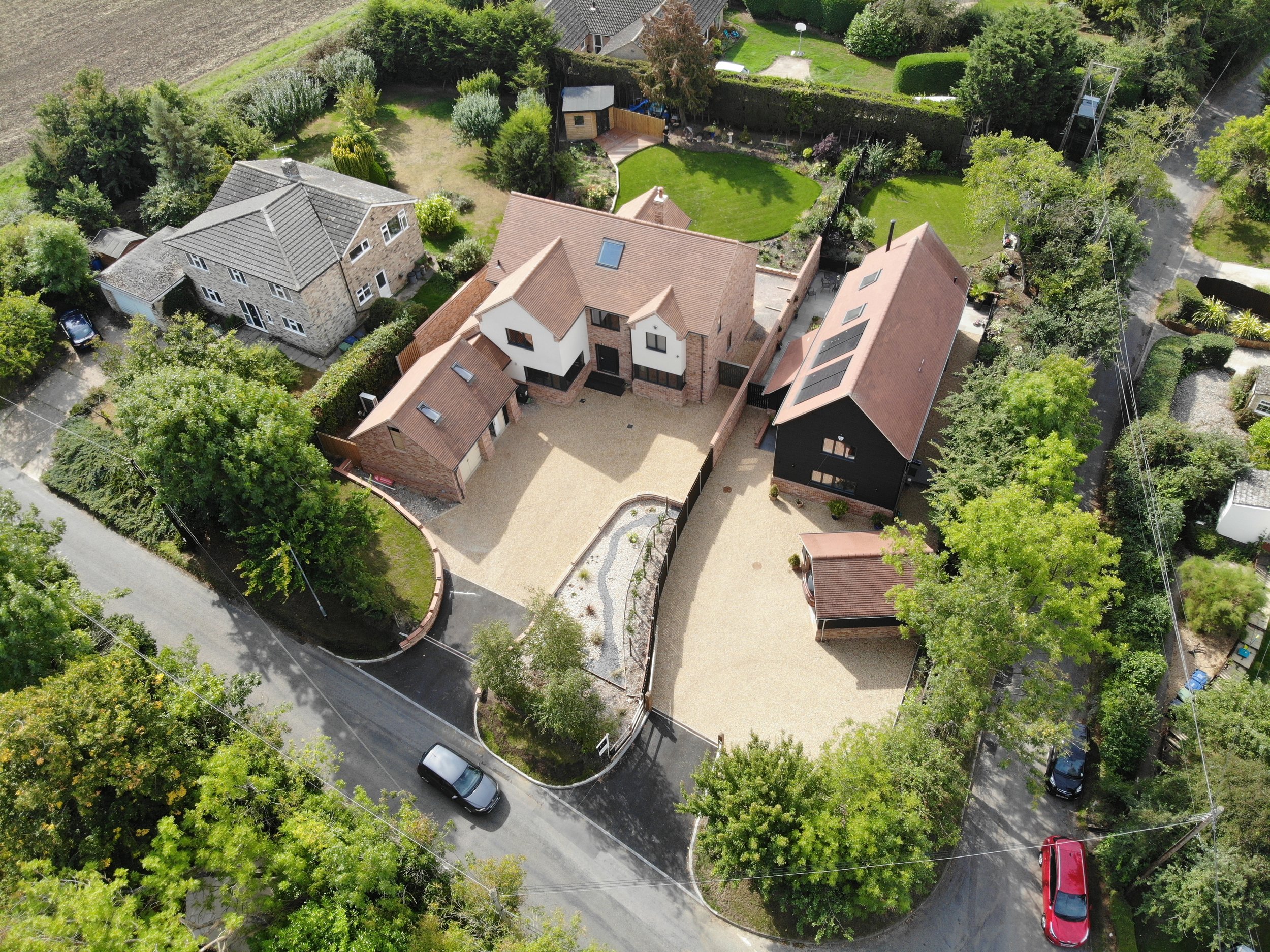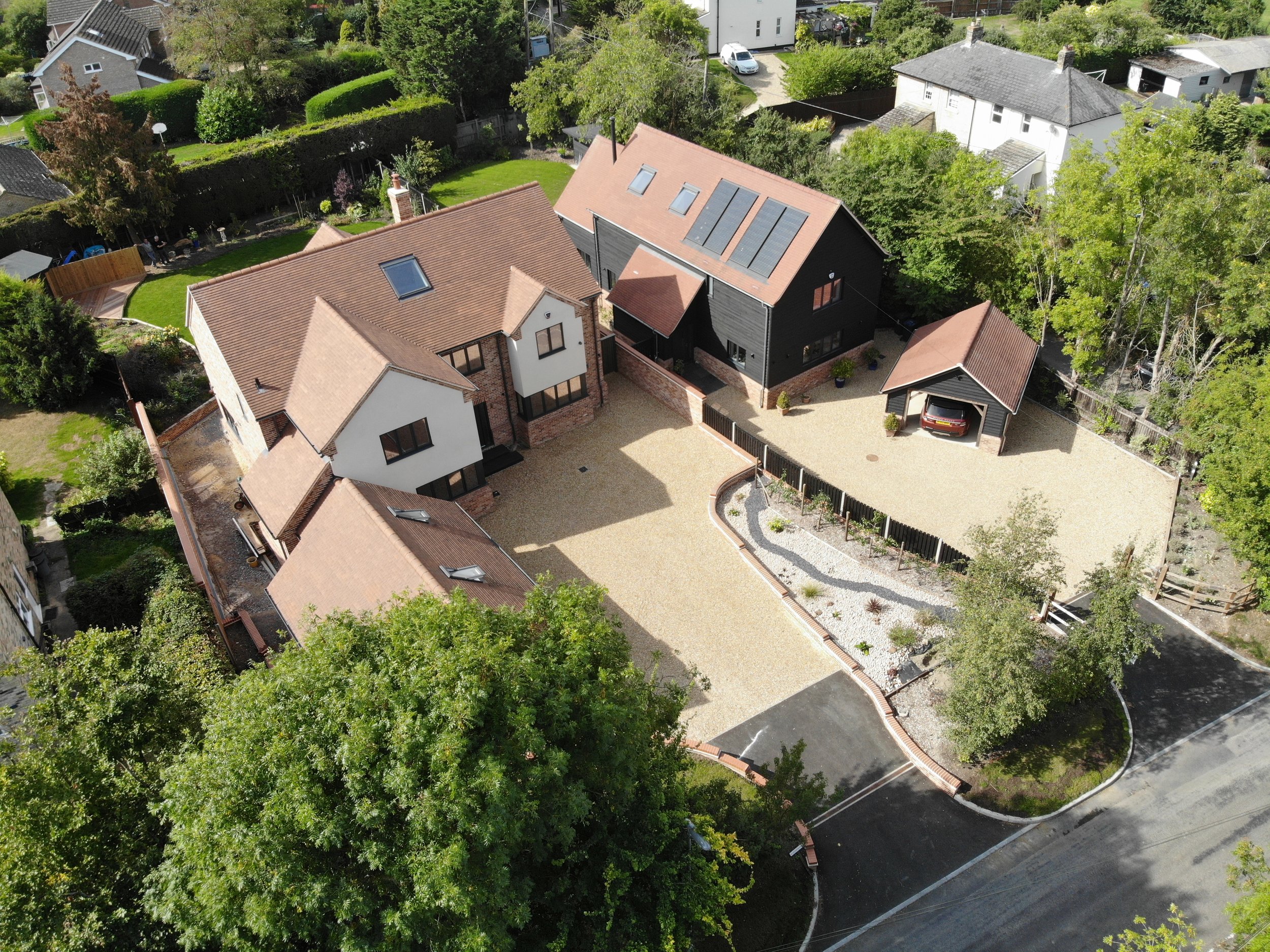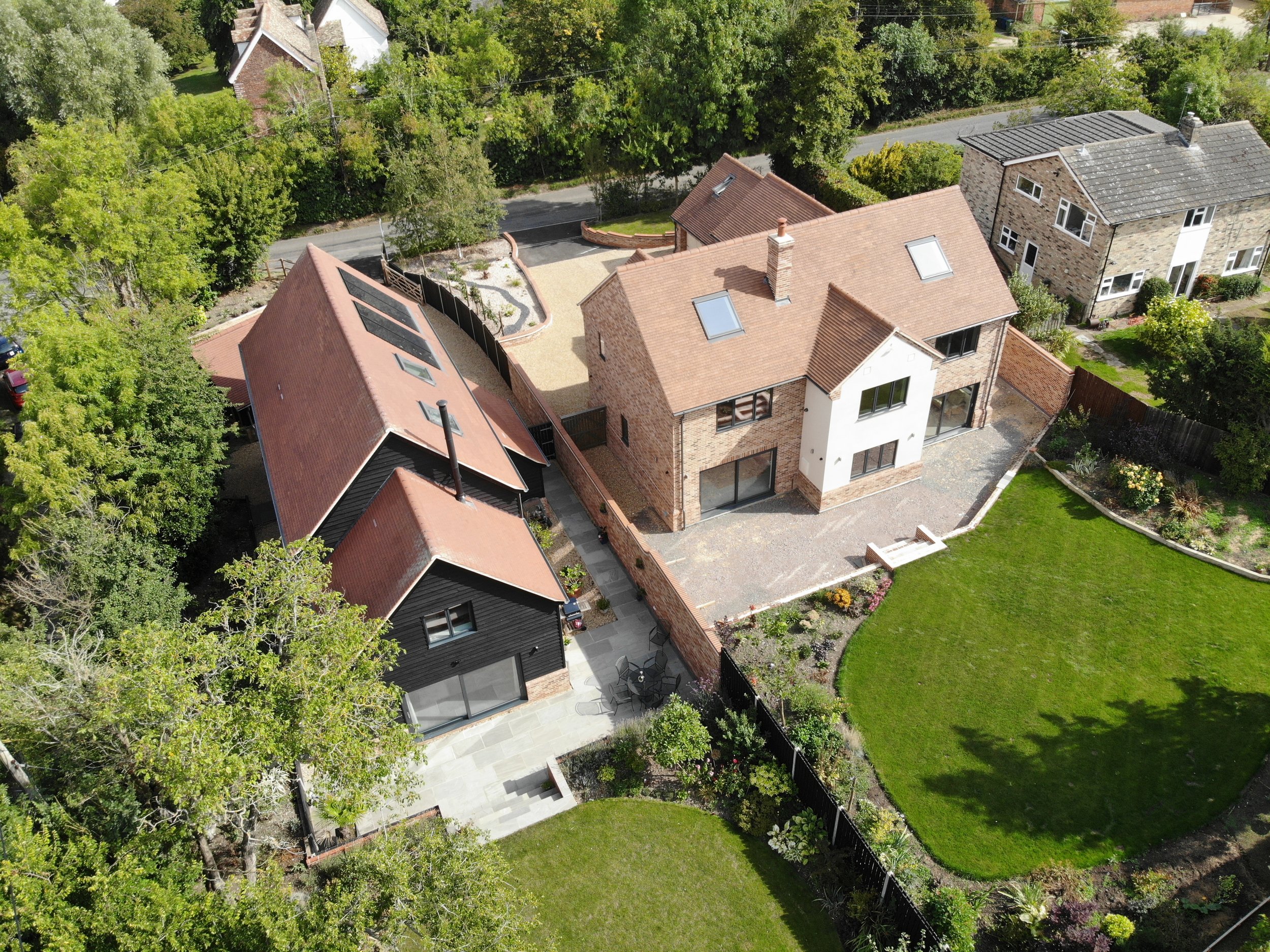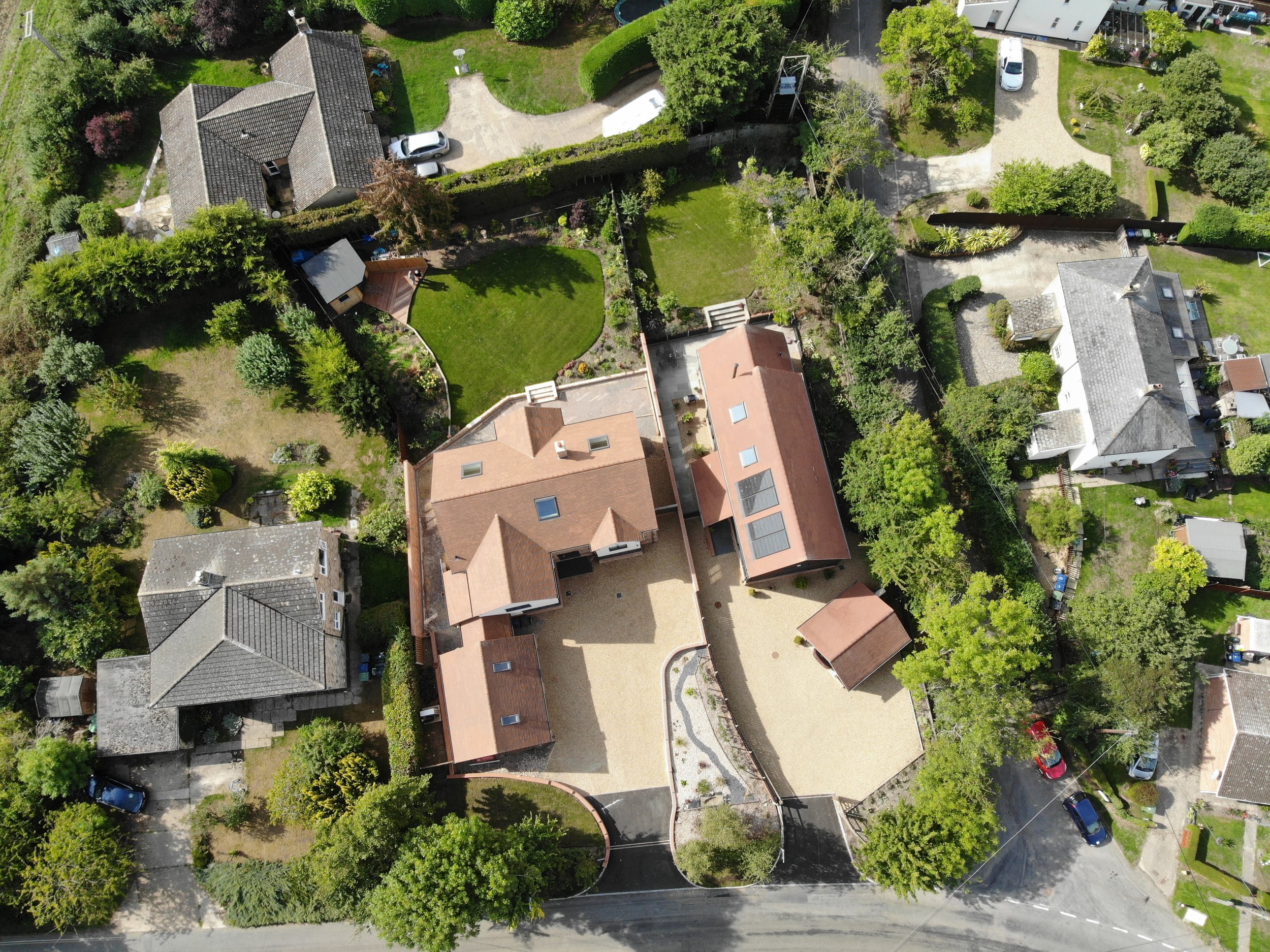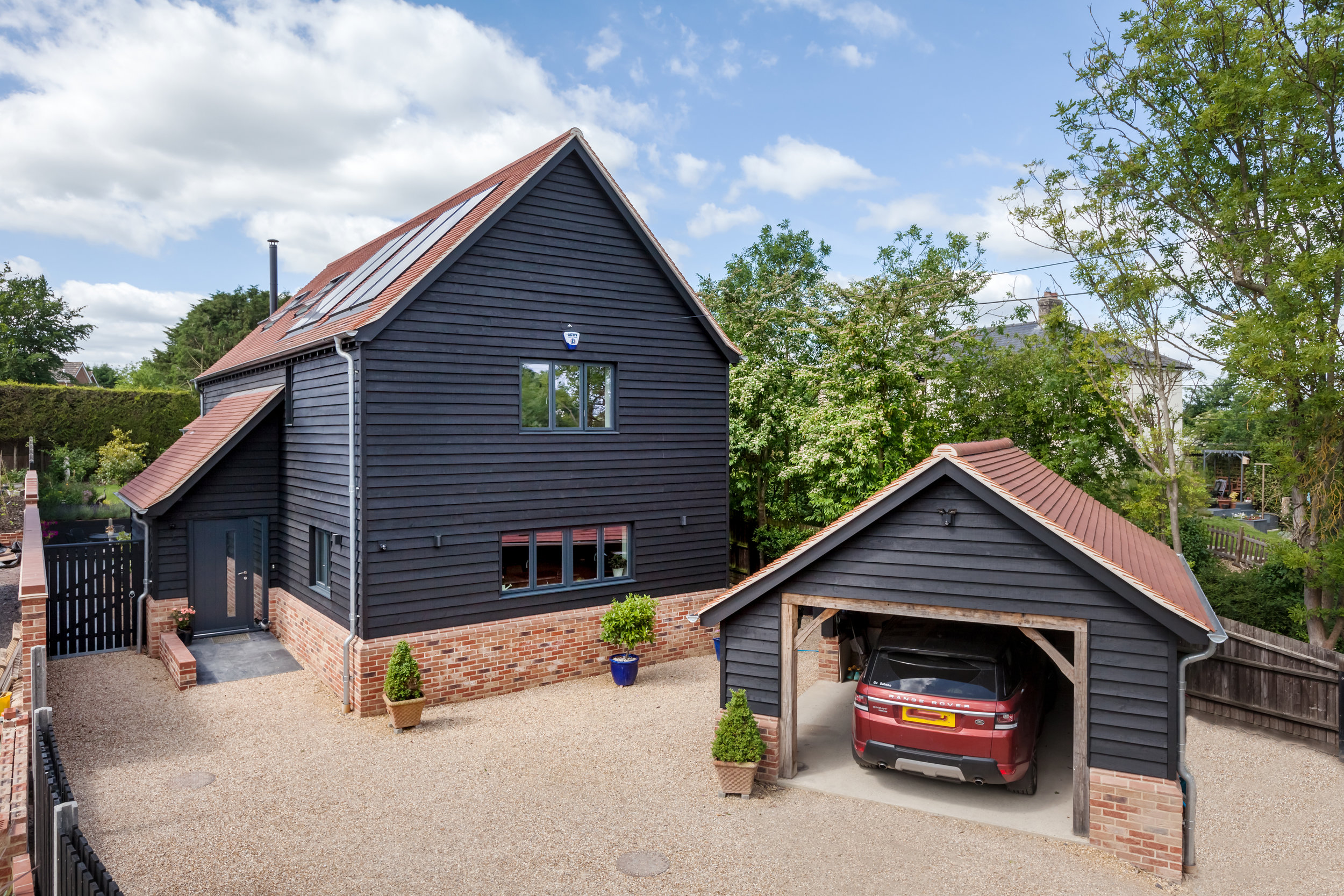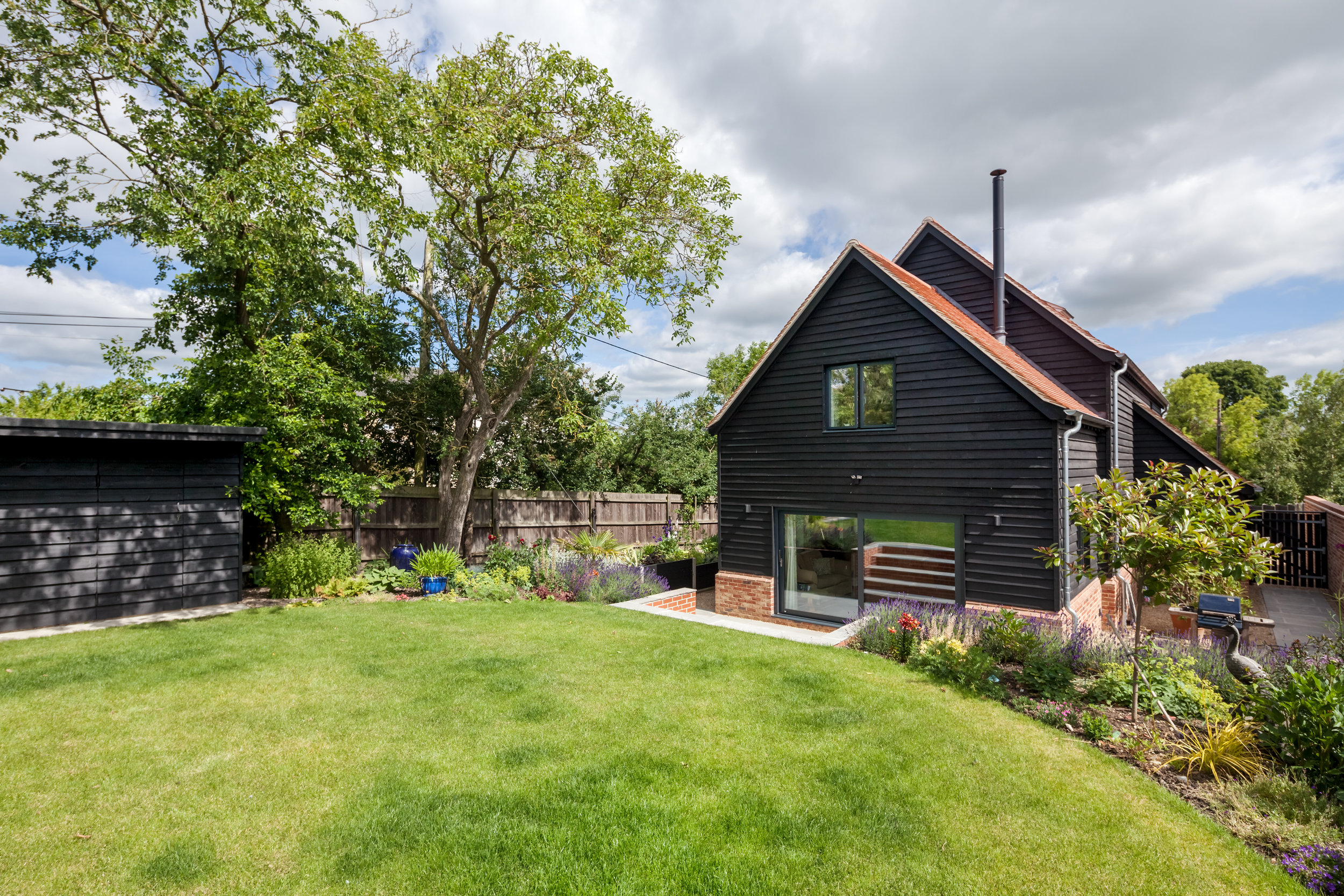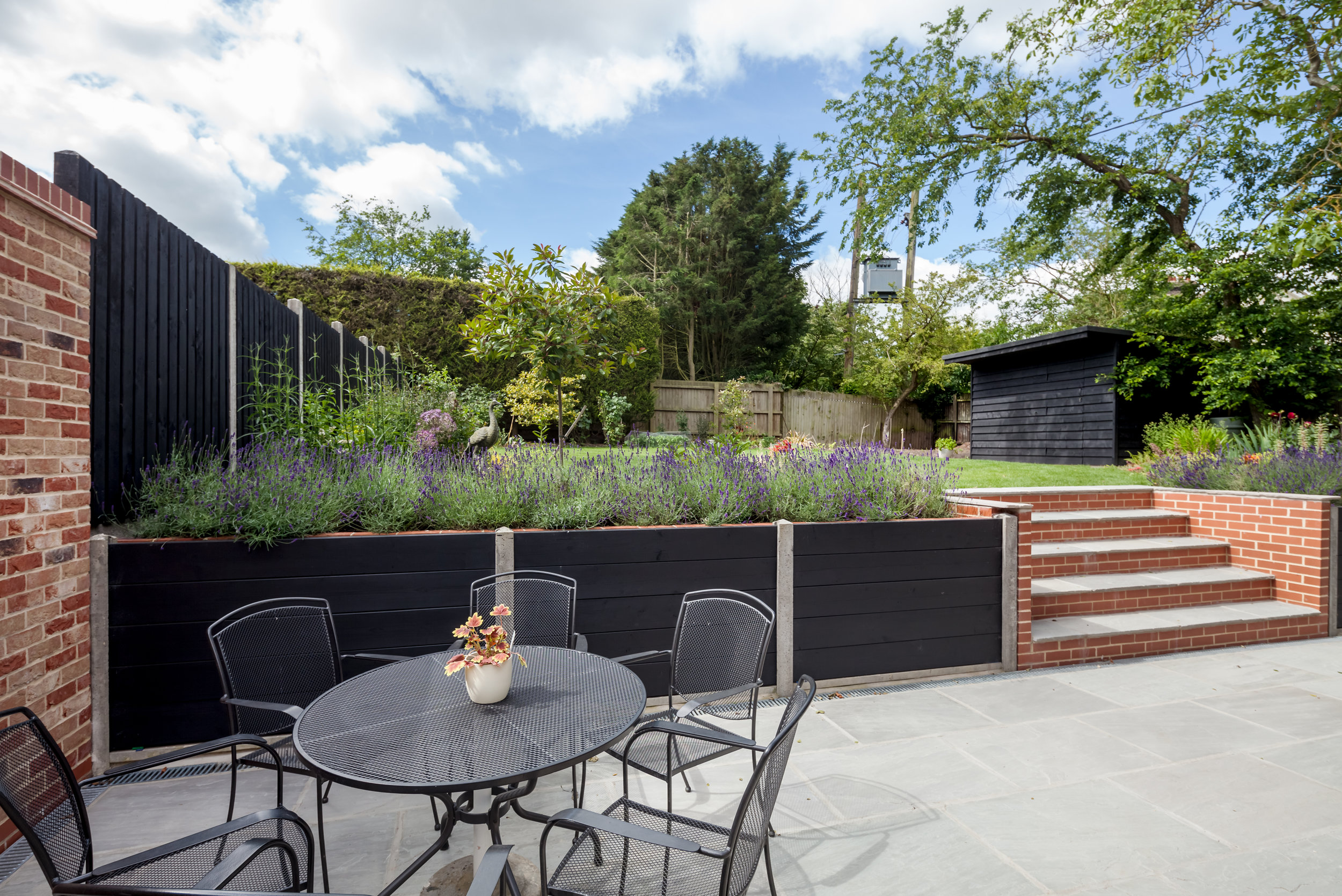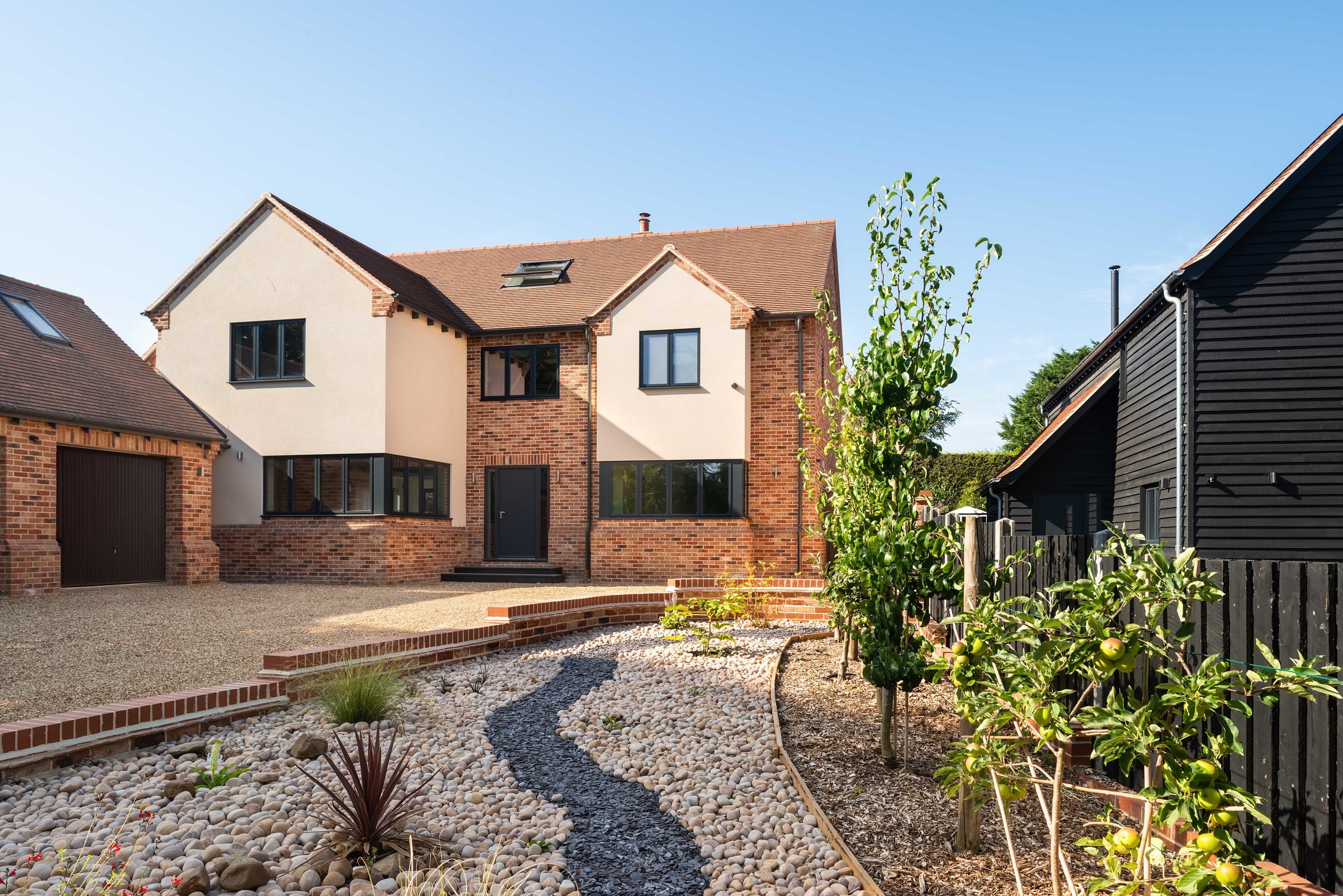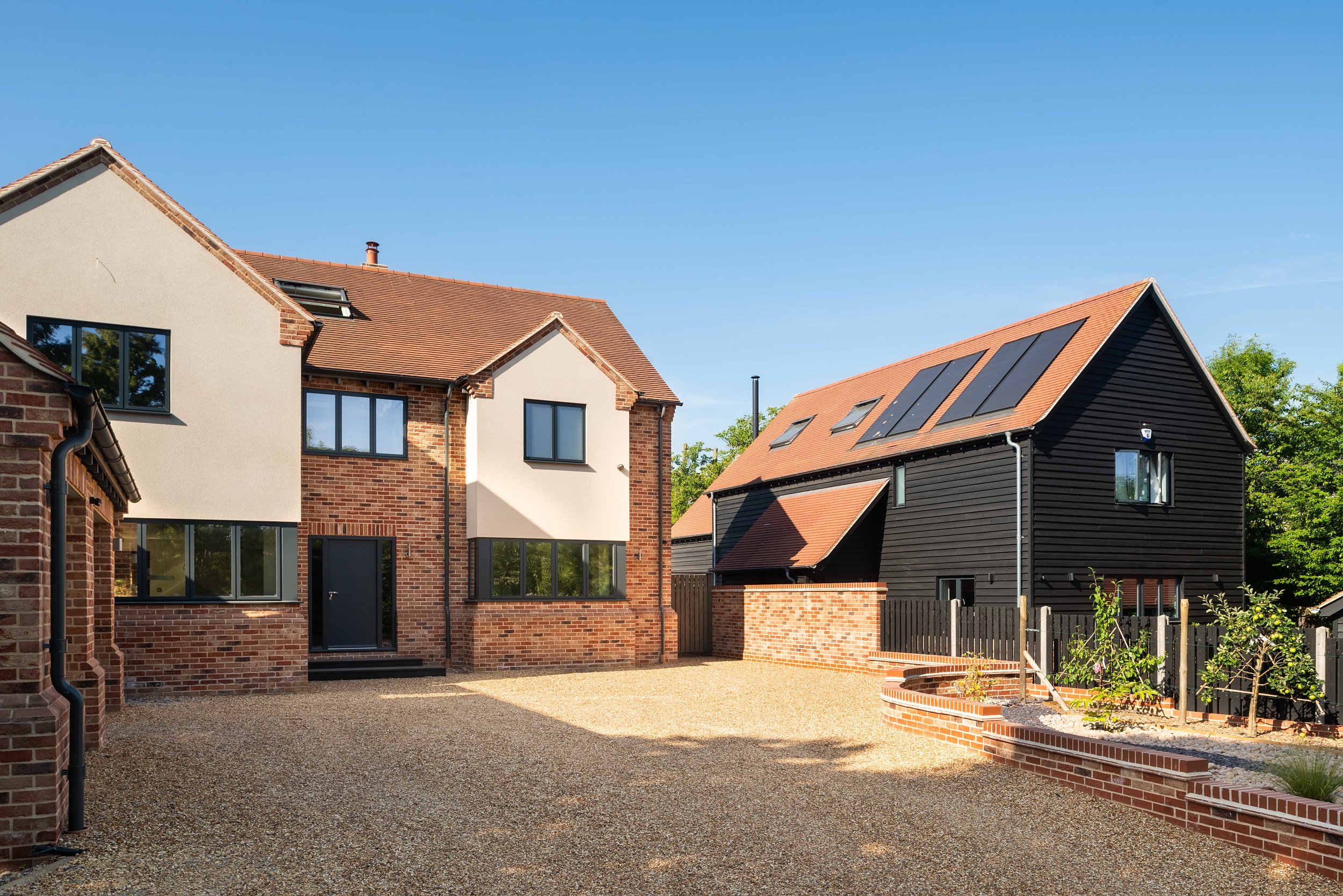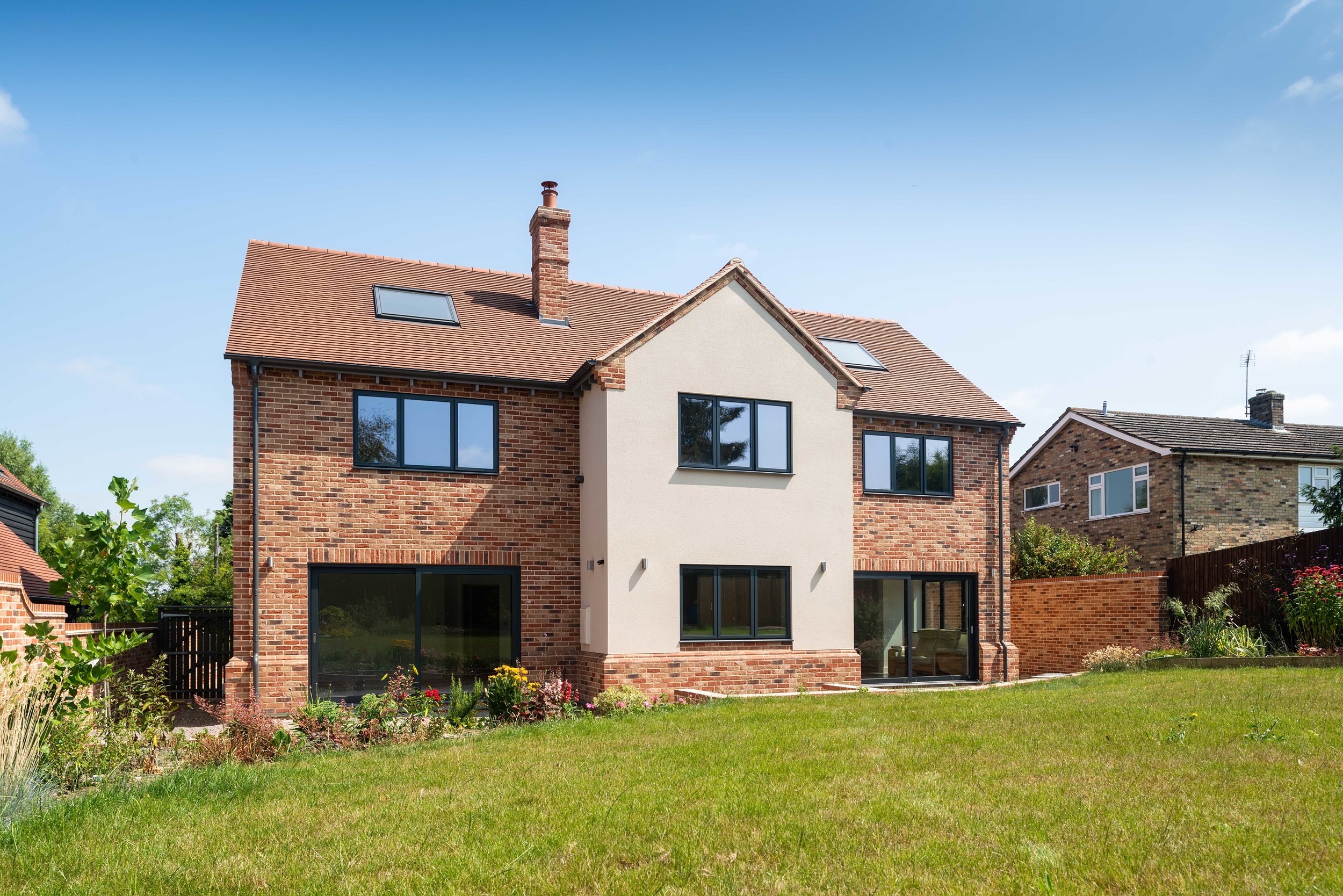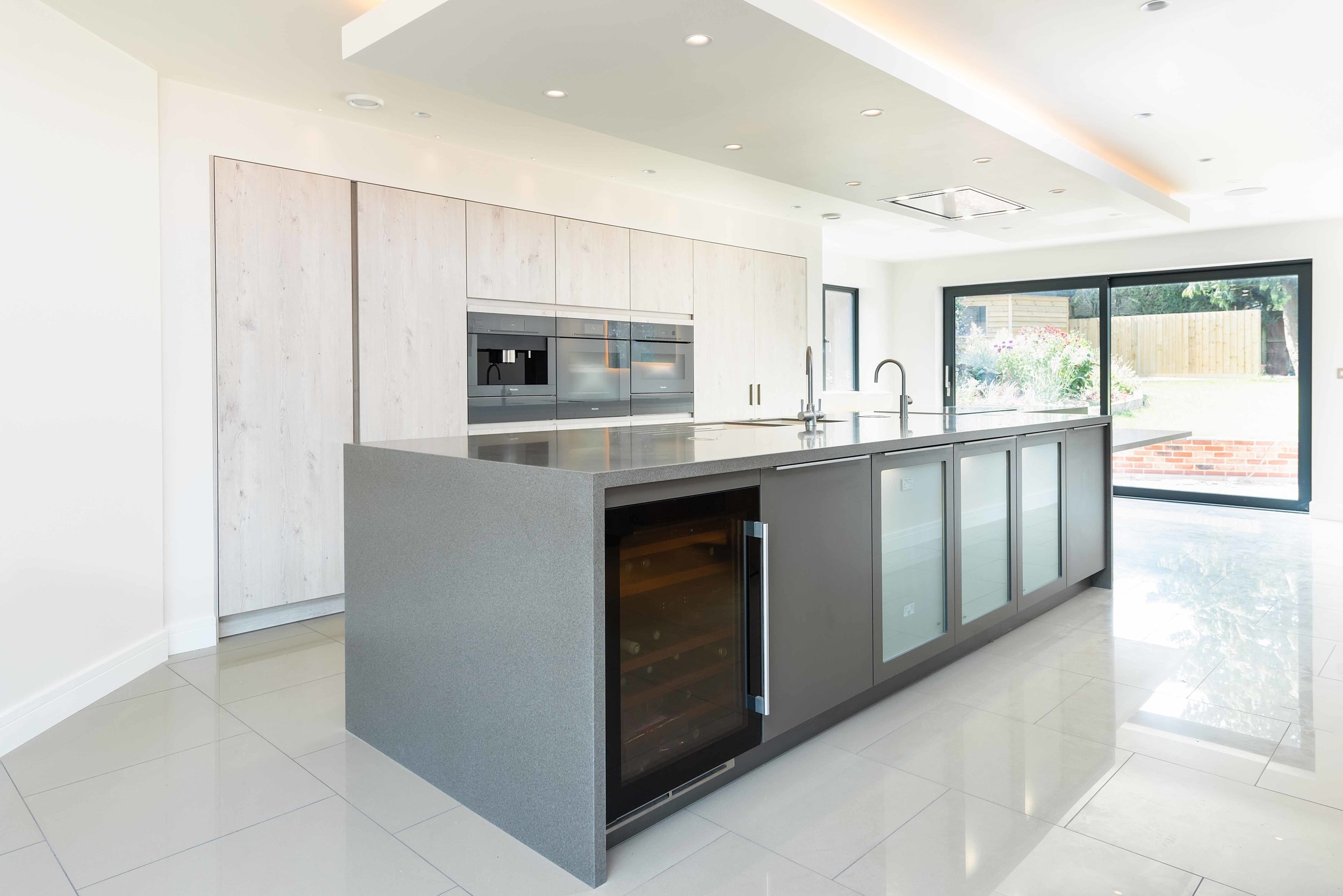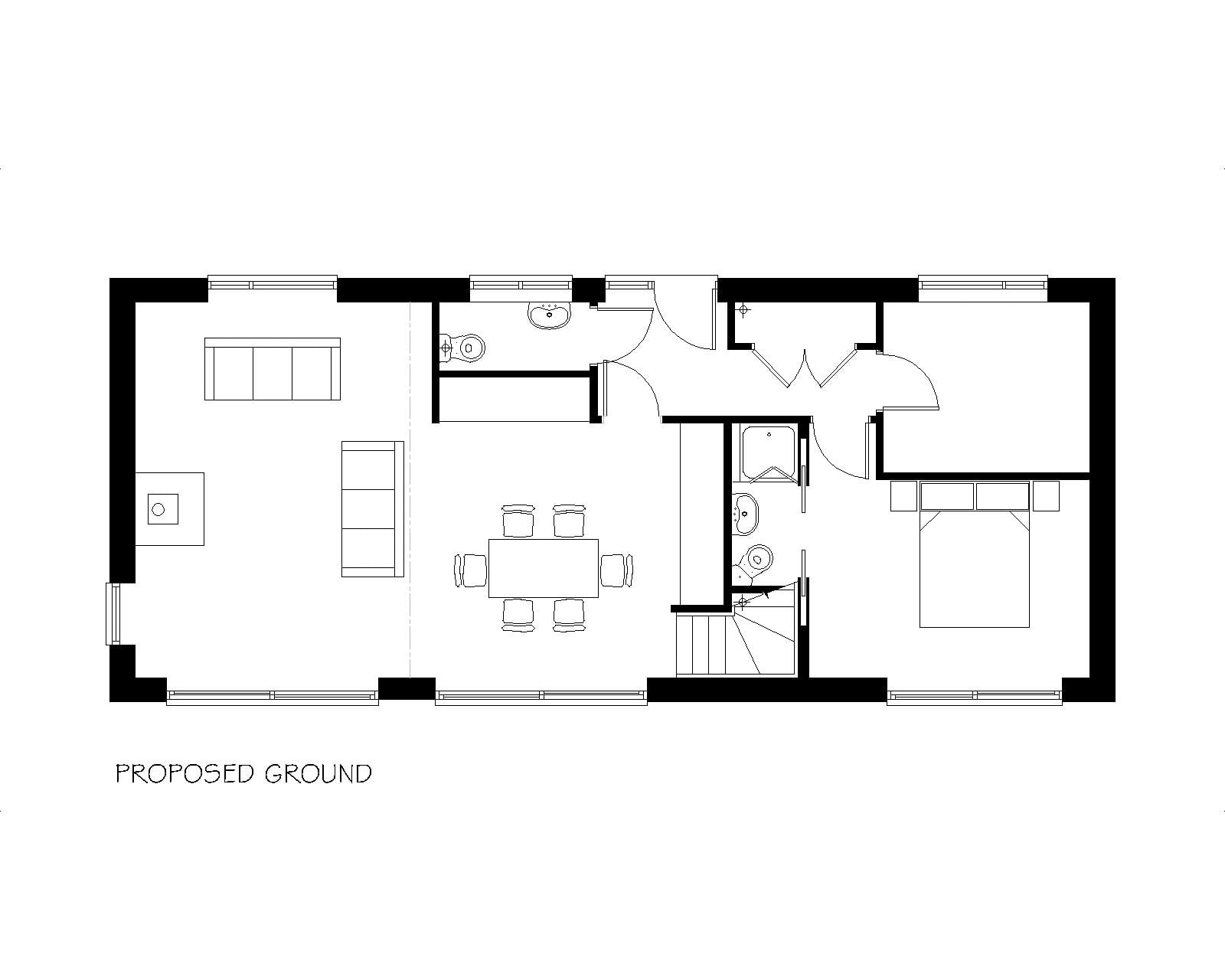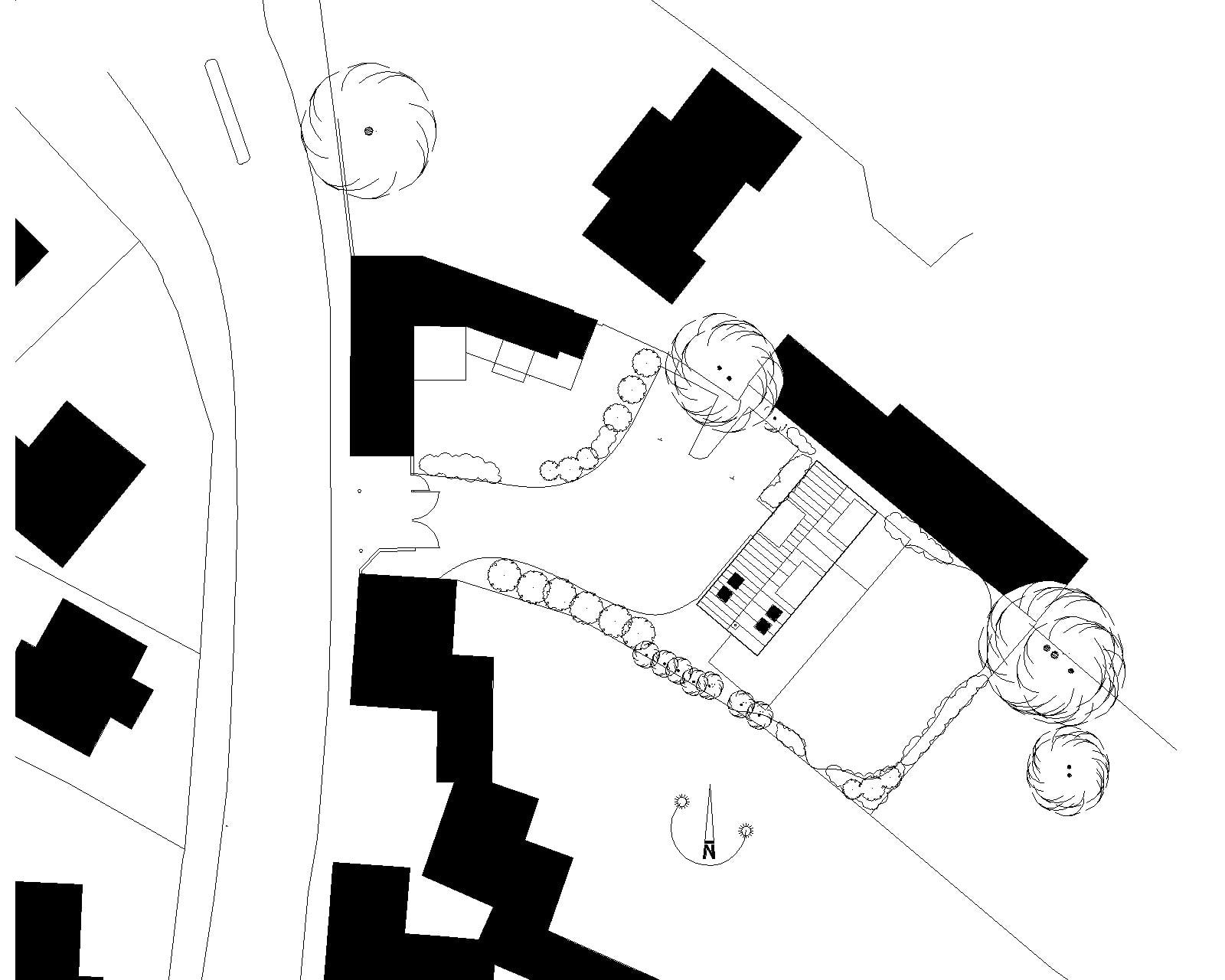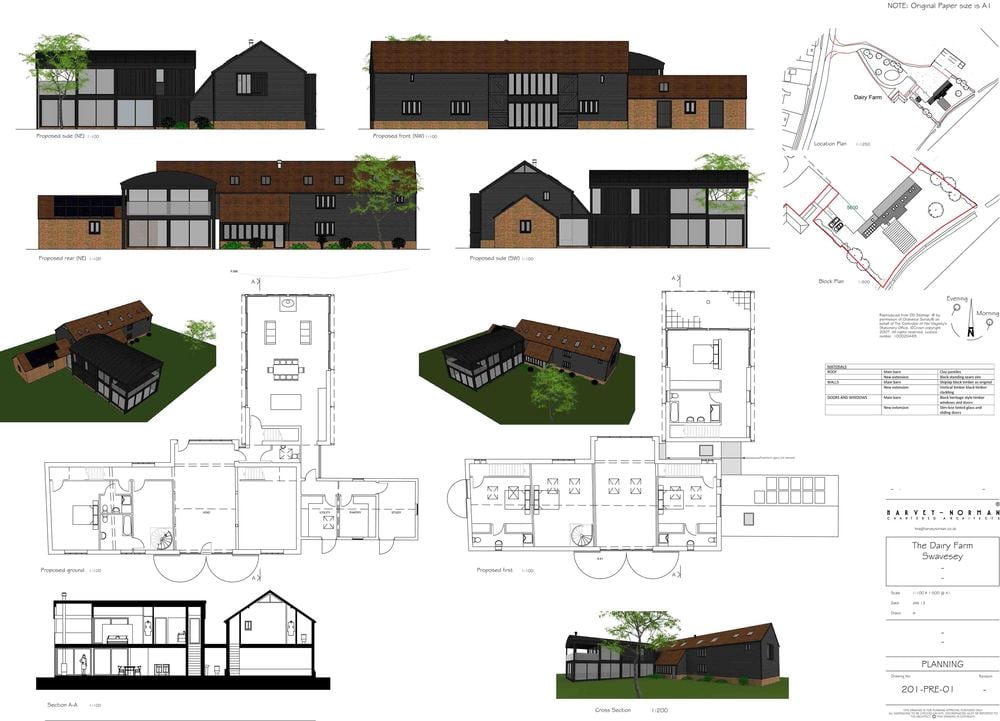Design
The south facing two storey building itself (114m2 / 1227 sq ft of internal space) achieves an open plan kitchen and living area with a two storey void over and aspect to front, side and sliding full height doors overlooking large garden and decking, three bedrooms and family bathroom, ground floor WC and study.
The simple rectangular compact timber frame design, but from simple readily available materials has the advantage that it is a simple, quick and cheap build.
Investing in the fabric
Rather relying on technology to generate heat, which can go wrong, needs maintenance and becomes outdated quickly, to save energy and keep running costs down a “fabric first” approach was taken to be achieved through insulation, good windows, airtightness and optimised design to capture passively as much of the sun’s heat as possible.
